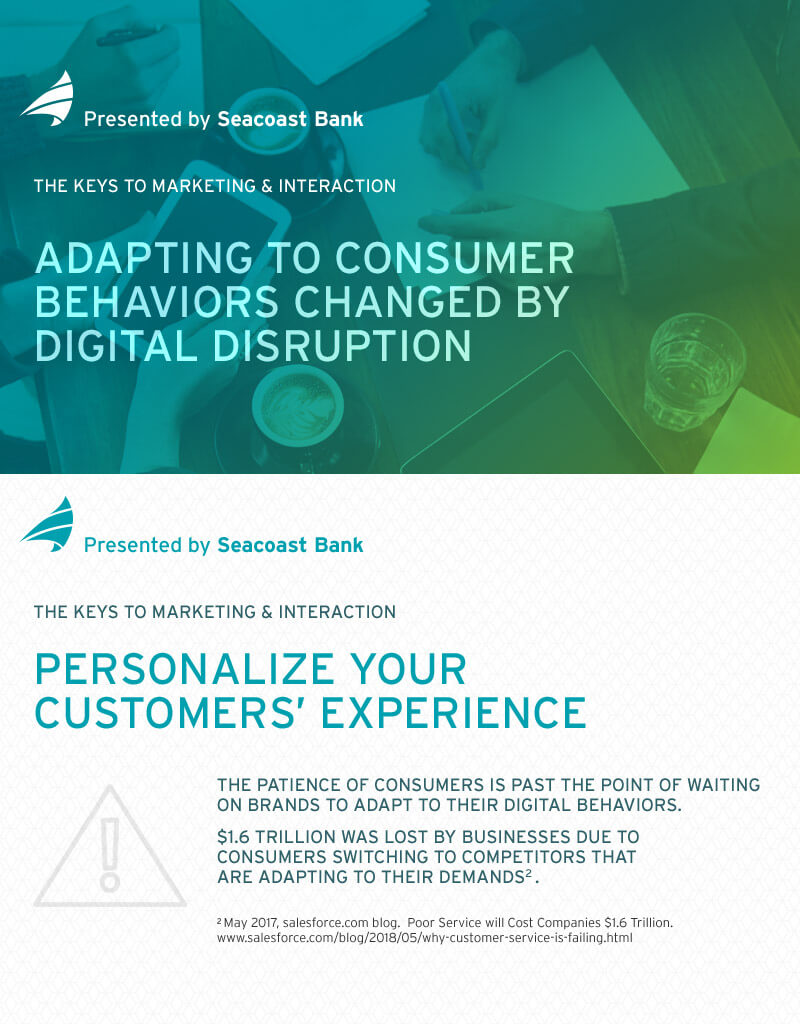
Digital disruption was once viewed as an opportunity for businesses to capitalize on changing consumer behaviors brought about by the Digital Age. Now, this is no longer an optional transformation, but a vital process to connecting with audiences through fully optimized channels of communication.
In fact, this has become so prevalent that consumers are no longer willing to wait for brands to adapt to their digital behaviors; instead, they will move on to brands that are more digitally adept. According to Salesforce, as a result, businesses lost $1.6 trillion due to customers switching to competitors because of the company’s digital savviness.
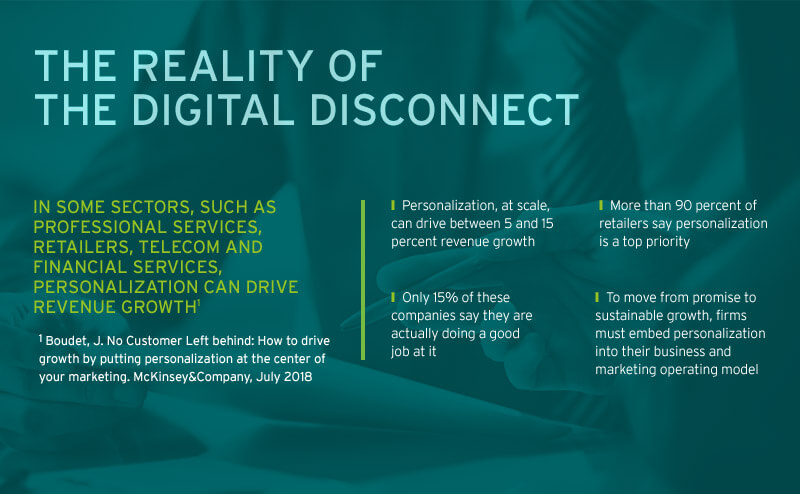
Business leaders must understand how to guide their customer interactions using the key factors caused by digital disruption, or lose revenue due to the poor customer service experiences of a digitally disconnected message.
In some sectors, such as professional services, retailers, telecom and financial services, personalization can drive revenue growth:
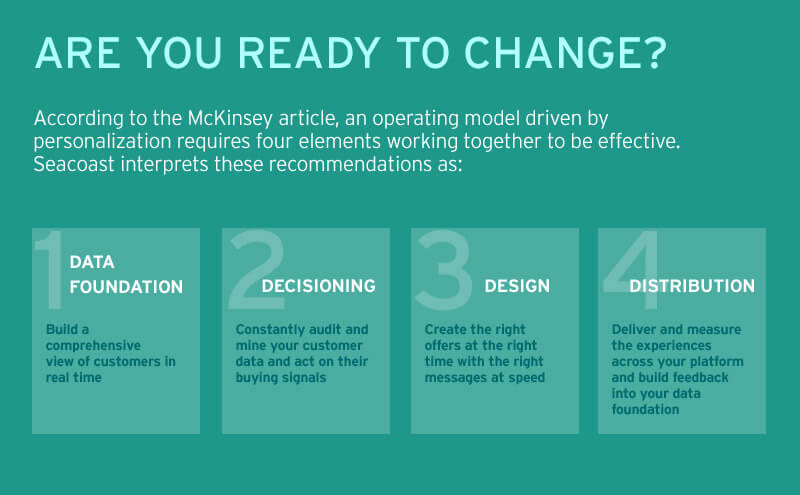
According to McKinsey, an operating model driven by personalization requires four key elements to work together effectively. We interpret these recommendations as:
The customer service experiences through digital personalization and social interactions with brands are key factors to meeting these expectations to retain their trust and business. To extract maximum value, integrate these elements and design your offers in direct response to your customers’ signals in real time.
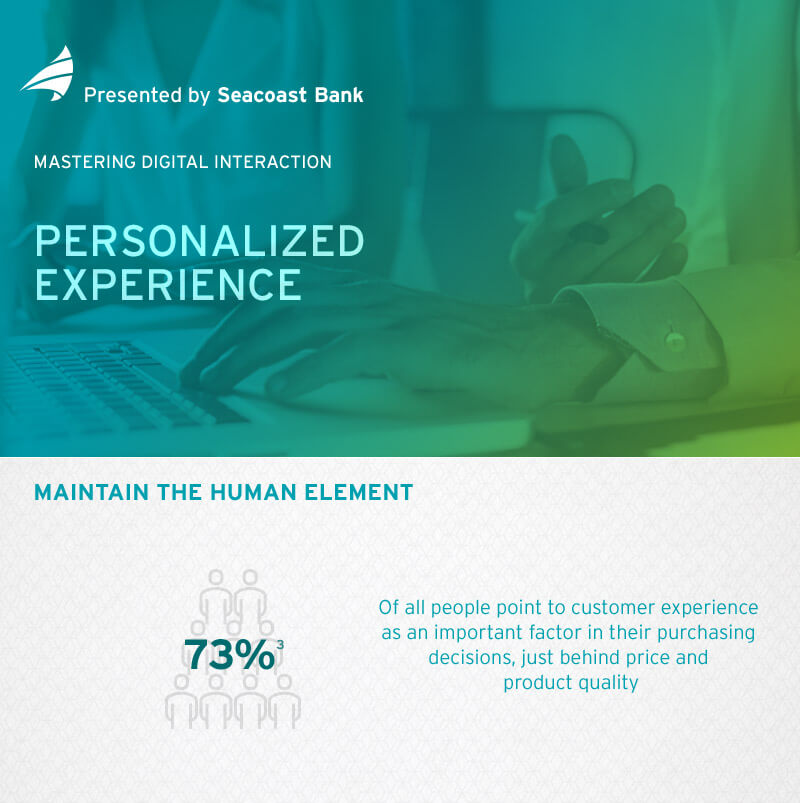
Providing the target audience with custom experiences isn’t a new approach to business interaction; however, digital communicators utilize the right digital and social opportunities to create more than one touch point of interaction. The progressive application of customization provides a more accurate ROI outside of traditional interactions like link clicks and allows a clearer picture of the market’s actual needs.
73% of all people cite customer experience as an important factor in their purchasing decisions, ranking just behind price and product quality.
Make it clear to users that your digital efforts are people-oriented. Utilizing digital communication that is “live” displays a heightened customer service that consumers find valuable.
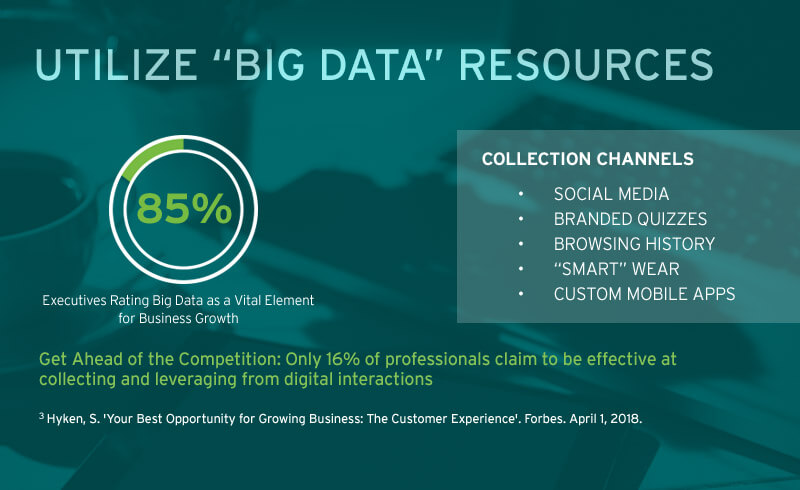
Collecting information through personal interaction online is not only intriguing for customers but also provides a more detailed level of user information. This analysis is used to enhance current marketing channels, improve product offerings, and provide a better experience in the future.
According to Forbes, while 85% of executives rate big data as a vital element for business growth, only 16% of professionals claim to be effective at collecting and leveraging digital interactions. In other words, there is a huge opportunity to become the brand that is the expert at collecting and leveraging data to provide a better online experience for your customers.
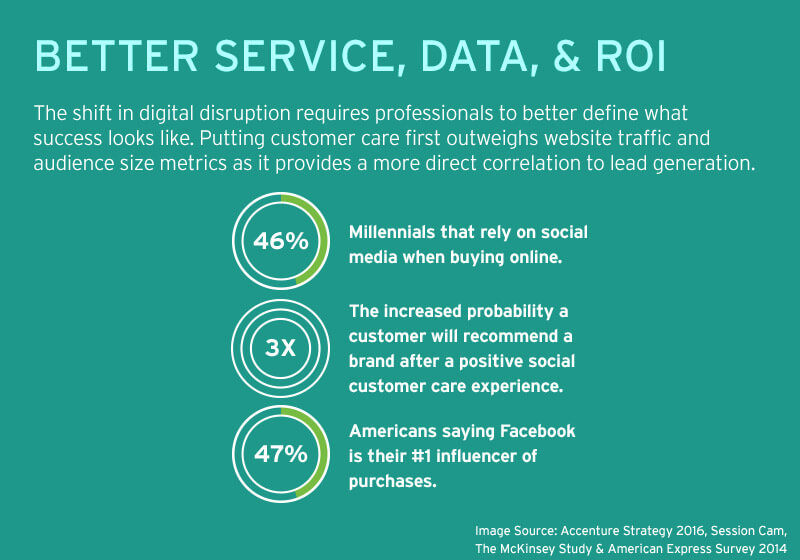
The shift in digital disruption requires professionals to better define what success looks like. Putting customer care first outweighs website traffic and audience size metrics as it provides a more direct correlation to lead generation.
Digital disruption causes customers to take multiple paths to engage with a brand. The answer for a genuine connection that matters isn’t always in giving them variety, but the reassurance of a consistent presence and location that they can count on. Opening channels to benefit from multiple levels of integrations will further these efforts, making the digital disruption work in your business's favor.

Once your personalization Roadmap is in place, consider adding an account-based approach to your marketing plan. In an August 2018 article, Crafted (a B2B demand generation agency) suggests asking yourself the following questions to determine if account-based marketing is a fit with your digital marketing strategy:
Are your sales and marketing teams closely aligned? It is a familiar adage, but sales and marketing need to be closely connected on campaign strategy, content delivery, customer follow-up, and execution for your plan to be effective.
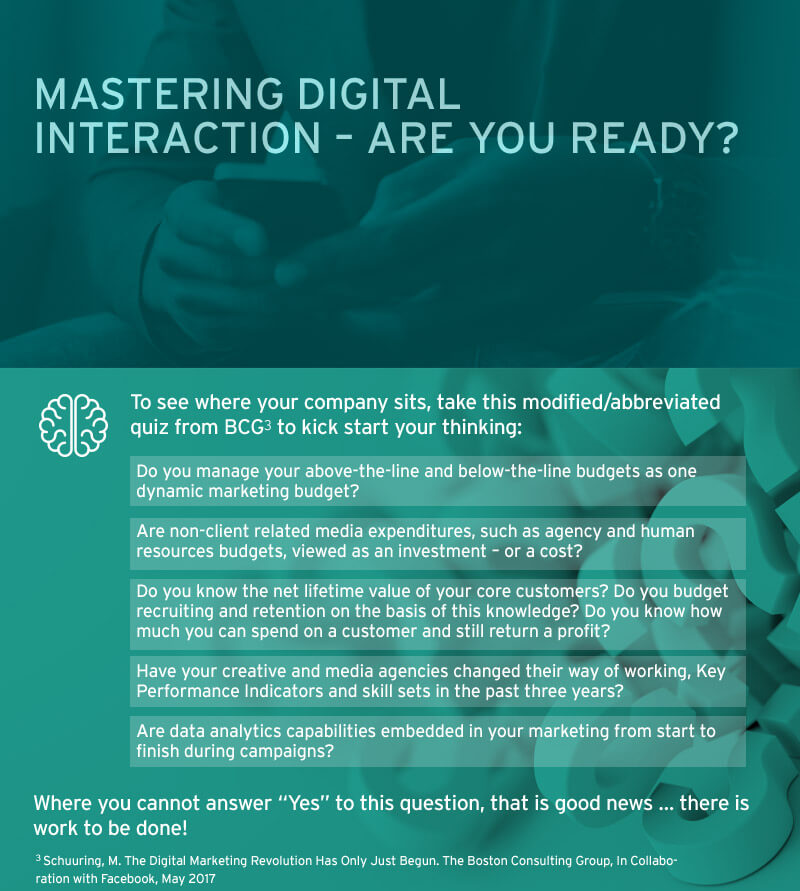
Finally, consider this from the Boston Consulting Group (BCG). Many companies are making changes to adapt to emerging customer demand for personalized marketing, but few are developing the necessary competencies within their organizations from the ground up. To fully capitalize on the opportunities provided by digital marketing, your business must integrate this competency into its operating DNA.
Take a look at the short quiz above. Did you answer “No” to any of the questions? That’s actually good news because it means you have room to grow! Use that quiz as a starting point for understanding the changes you can make to begin mastering digital interaction.
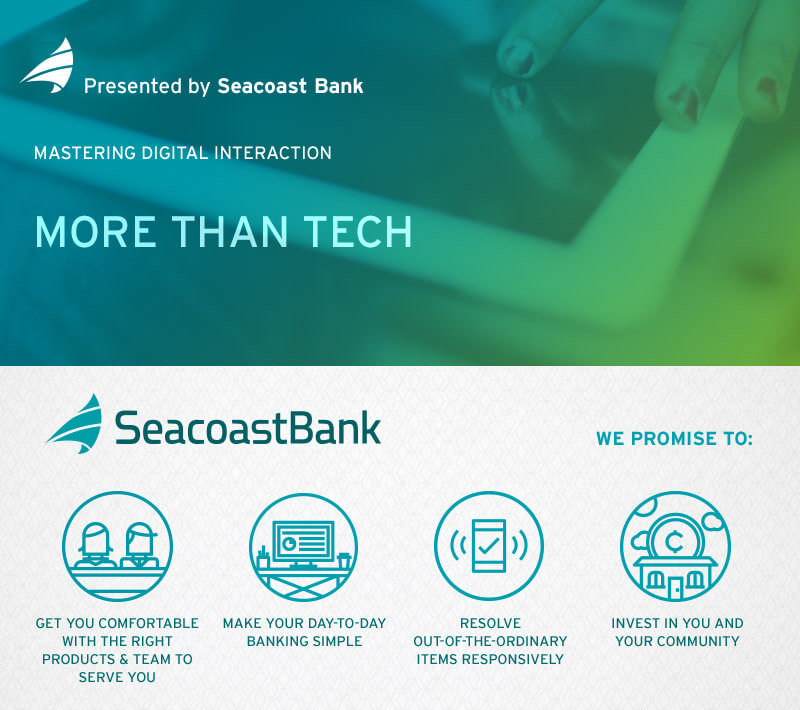
To become a master digital communicator in the modern age, it all comes down to emphasizing how custom and collaborative technology work in tandem to create experiences that matter to the target audience. Moving beyond the idea of simply implementing the newest technology or building a presence on the most popular channels allows a more valuable and clearer conversation between brands and their target audience. Leveraging the advances of the digital age only comes when companies use digital and social innovation as an opportunity to get to know their customers first and encourage transactions later.
Here at Seacoast Bank, we’re working towards becoming a master of digital communications in a few ways. When you work with us, we make four main promises when it comes to our communications

Topics: Business Culture, Business Management
Are you interested in contacting a local, Florida banker to discuss your individual financial needs? We’d love to speak with you. Schedule a consultation today.
Share: